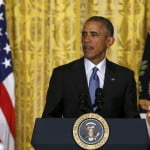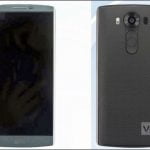
How far have smartphones penetrated India and how do people in the country access the internet? Do they use their mobile phones to listen to FM radio, and how many of them have television sets with cable or dish TV connections?
These and other questions are set to be asked by the Houselisting and Housing Census, a precursor to the population enumeration exercise of the main census in 2021. The queries have been classified into 34 categories with subcategories and are aimed at providing a snapshot of how Indians live. The insights from the survey will be valuable for the government in tailoring its programmes and for companies seeking to detect trends that can be exploited as the nation of 1.3 billion people evolves, experts said.
The survey will gather data related to how Indians access the internet and consume entertainment, according to an official with knowledge of the matter. It will look at what fuel Indians use, how they access drinking water, whether they own a TV set, radio or laptop with internet access and their mode of transport among other details. The country-wide survey will be carried out between August 12 and September 4.
For the first time, it will ask whether the household watches TV through multiplesystem operators (MSOs), local cable operators or direct-to-home (DTH) connections. The households that use IPTV services such as streaming or video-ondemand will be separately listed. The survey will also check whether a home has a radio set, what kind, and whether stations are accessed through feature phones or smartphones, including whether these are FM stations.
Internet penetration was measured in 2011 in the last such survey too with a question on the number of computers or laptops and whether these had online access for use by one or more members of the household. This time there’s a question on mode of access as well–dial-up, DSL or cable. When it comes to phones, it will seek details as to whether these are smartphones, feature phones or landlines.
Departures from 2011
According to the 2011 findings, 20% of urban households and 5% of rural households owned a computer or a laptop. Only 1% of rural households owned a computer or a laptop with internet, while the figure was 8% for urban ones.
That survey counted mobile and landline use separately. While 6% of the households owned both a mobile phone and a landline phone, it recorded an increase of 16% in televisions and a corresponding decline of about 15% in radios. Less than one out of 10 households had computers or laptops, with only 3% having internet access. Of the total surveyed, 63% households had phones — 82% in urban areas and 54% in rural areas.

Sunil Alagh, business and data consultant, said the new markers, particularly of the number of smartphone users in India, will help not just policy makers but also aid in understanding how consumer behaviour is changing.
In other departures from 2011, the survey this time will record the total number of persons living in the house—regardless of gender—and will also include households that have a transgender person as the head of the family or the main earning member.
“Till now, they were recorded as male, but the option of third gender has been available in this particular question now,” said the official cited above.
About 27 million households, constituting 11% of total households in the country, were headed by women, according to the 2011 survey. The highest number of female-headed households is in Lakshadweep at 43.7%, followed by Kerala at 23%.
The last survey recorded whether a house was being rented. The new one will ask if a tenant has a house elsewhere in the country.
When it comes to water access, bottled water has been added to the list of options, which include hand pumps, tube wells, treated sources and wells among others. The option of “solar” has also been added to the list of fuel households used to cook, which include crop residue, kerosene, LPG, biogas coal, cowdung cakes among others. It will also record how many members in a family avail of banking services. Till now, it was only recorded whether the head of the family or any member had access to a bank.
[“source=economictimes.indiatimes”]









